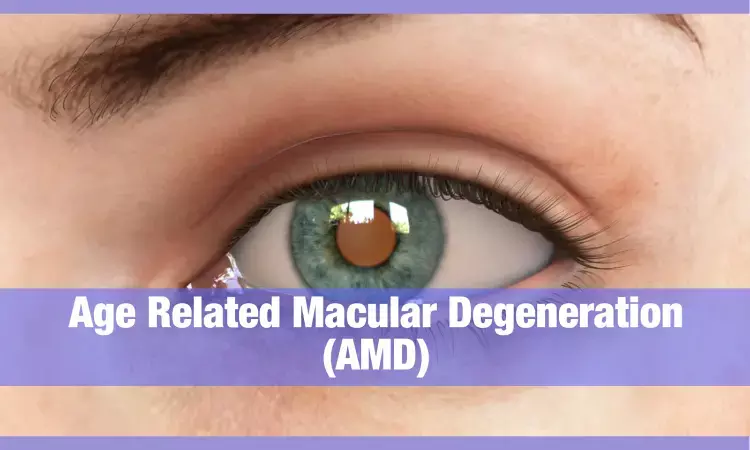- Home
- Medical news & Guidelines
- Anesthesiology
- Cardiology and CTVS
- Critical Care
- Dentistry
- Dermatology
- Diabetes and Endocrinology
- ENT
- Gastroenterology
- Medicine
- Nephrology
- Neurology
- Obstretics-Gynaecology
- Oncology
- Ophthalmology
- Orthopaedics
- Pediatrics-Neonatology
- Psychiatry
- Pulmonology
- Radiology
- Surgery
- Urology
- Laboratory Medicine
- Diet
- Nursing
- Paramedical
- Physiotherapy
- Health news
- Fact Check
- Bone Health Fact Check
- Brain Health Fact Check
- Cancer Related Fact Check
- Child Care Fact Check
- Dental and oral health fact check
- Diabetes and metabolic health fact check
- Diet and Nutrition Fact Check
- Eye and ENT Care Fact Check
- Fitness fact check
- Gut health fact check
- Heart health fact check
- Kidney health fact check
- Medical education fact check
- Men's health fact check
- Respiratory fact check
- Skin and hair care fact check
- Vaccine and Immunization fact check
- Women's health fact check
- AYUSH
- State News
- Andaman and Nicobar Islands
- Andhra Pradesh
- Arunachal Pradesh
- Assam
- Bihar
- Chandigarh
- Chattisgarh
- Dadra and Nagar Haveli
- Daman and Diu
- Delhi
- Goa
- Gujarat
- Haryana
- Himachal Pradesh
- Jammu & Kashmir
- Jharkhand
- Karnataka
- Kerala
- Ladakh
- Lakshadweep
- Madhya Pradesh
- Maharashtra
- Manipur
- Meghalaya
- Mizoram
- Nagaland
- Odisha
- Puducherry
- Punjab
- Rajasthan
- Sikkim
- Tamil Nadu
- Telangana
- Tripura
- Uttar Pradesh
- Uttrakhand
- West Bengal
- Medical Education
- Industry
Air pollution linked to heightened risk of progressive and irreversible sight loss

Air pollution is linked to a heightened risk of progressive and irreversible sight loss, known as age related macular degeneration, or AMD for short, reveals a large long term study, published online in the British Journal of Ophthalmology.
If these findings are confirmed, they could pave the way for new treatment options, say the researchers.
AMD is the leading cause of irreversible blindness among the over 50s in high-income countries, with the numbers of those affected projected to reach 300 million by 2040.
Known risk factors include older age, smoking, and genetic make-up. But given that ambient air pollution is associated with heightened risks of heart and respiratory diseases, the researchers wanted to find out if it might also be associated with a heightened risk of AMD.
They drew on data from 115,954 UK Biobank (UKBB) study participants aged 40-69 with no eye problems at the start of this study in 2006.
Participants were asked to report any formal diagnosis of AMD by a doctor. And structural changes in the thickness and/or numbers of light receptors in the retina--indicative of AMD-- were assessed in 52,602 people for whom complete data were available in 2009 and 2012, using retinal imaging (non-invasive optical coherence tomography or OCT).
Measures of ambient air pollution included those for particulate matter (PM2.5), nitrogen dioxide (NO2), and nitrogen oxides (NOx).
The estimates for these were provided by the Small Area Health Statistics Unit as part of the BioSHaRE-EU Environmental Determinants of Health Project. Official information on traffic, land use, and topography was used to calculate the annual average air pollution levels at participants' home addresses.
Of the total number of study participants, 1286 (just over 1%) were diagnosed with AMD. Among the 52,602 people whose eyes had been assessed, 75% of those with a clinical diagnosis of AMD had signs of AMD on retinal imaging compared to only 12% of those without a clinical diagnosis of AMD.
After accounting for potentially influential factors, including underlying health conditions and lifestyle, analysis of the data showed that higher fine particulate matter (PM2.5 ) exposure was associated with a higher (8%) risk of AMD, while all other pollutants, except coarse particulate matter, were associated with changes in retinal structure.
This is an observational study, and as such, can't establish cause. But the findings echo those found elsewhere in the world, say the researchers.
Ambient air pollution could plausibly be associated with AMD through oxidative stress or inflammation, they suggest.
"Overall, our findings suggest that ambient air pollution, especially fine [particulate matter] or those of combustion-related particles, may affect AMD risk," they write.
"It is possible that the structural features observed may be unrelated to AMD, but associated with pollution-induced retinal toxicity. However, the direction of the relationships between air pollution and both AMD and associated retinal layer thicknesses indicate higher exposure to air pollution may make the cells more vulnerable and increase the risk of AMD," they explain.
"Our findings add to the growing evidence of the damaging effects of ambient air pollution, even in the setting of relative low exposure," they conclude. If [they] are replicated, this would support the view that air pollution is an important modifiable risk factor for AMD."
https://bjo.bmj.com/lookup/doi/10.1136/bjophthalmol-2020-316218
Hina Zahid Joined Medical Dialogue in 2017 with a passion to work as a Reporter. She coordinates with various national and international journals and association and covers all the stories related to Medical guidelines, Medical Journals, rare medical surgeries as well as all the updates in the medical field. Email: editorial@medicaldialogues.in. Contact no. 011-43720751
Dr Kamal Kant Kohli-MBBS, DTCD- a chest specialist with more than 30 years of practice and a flair for writing clinical articles, Dr Kamal Kant Kohli joined Medical Dialogues as a Chief Editor of Medical News. Besides writing articles, as an editor, he proofreads and verifies all the medical content published on Medical Dialogues including those coming from journals, studies,medical conferences,guidelines etc. Email: drkohli@medicaldialogues.in. Contact no. 011-43720751


